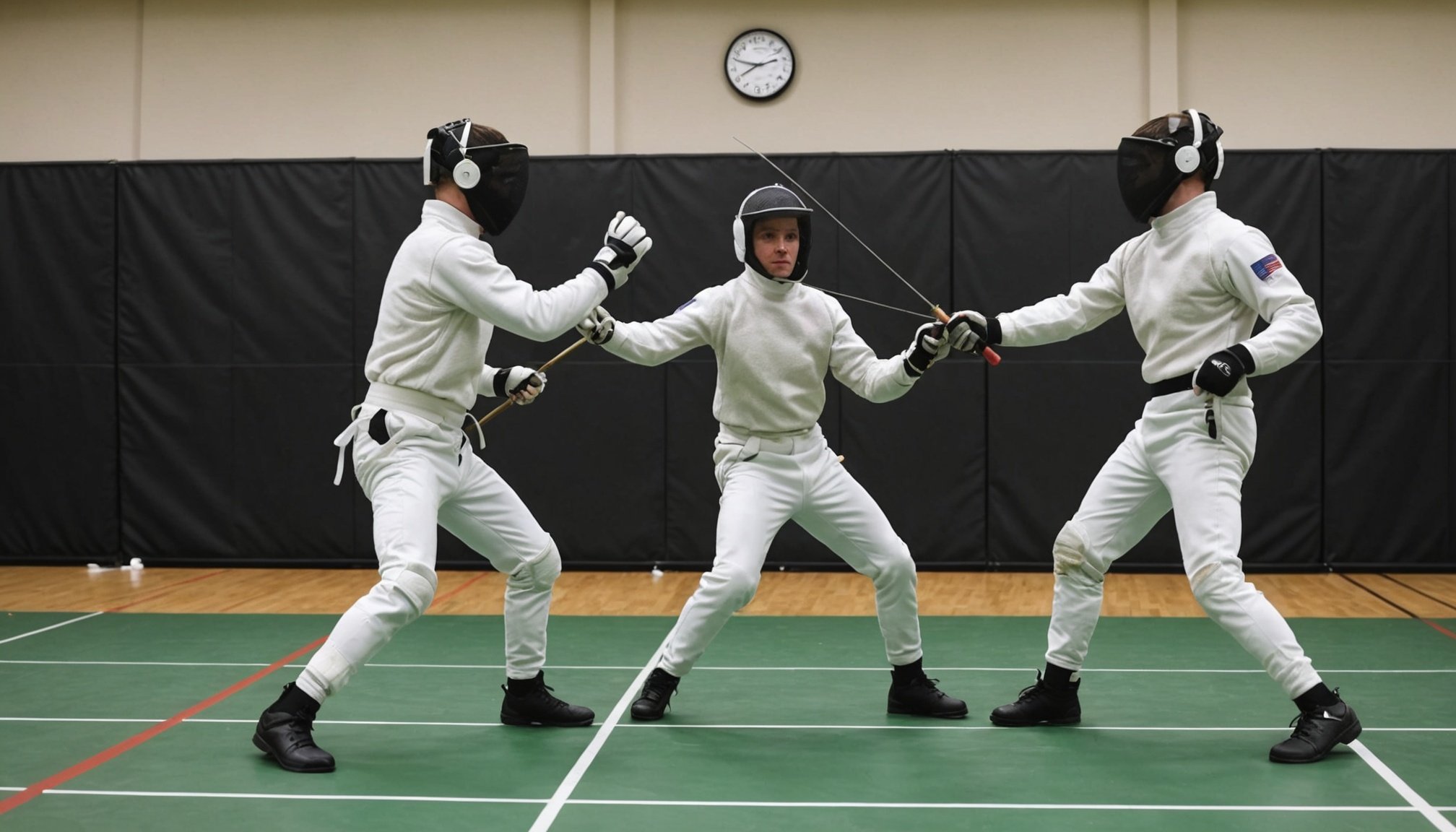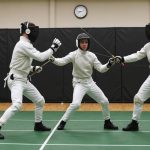Advanced Tactical Training Techniques
In the world of competitive fencing, mastering tactical training is crucial. One of the key elements to focus on is reaction time improvement. Fencing demands quick reflexes, as split-second decisions often determine the outcome of a duel. Advanced tactical training methods provide fencers with the tools needed to fine-tune their reflexes and decision-making skills.
Reaction time holds significant importance in competitive fencing, influencing fencers’ ability to respond rapidly to opponents’ movements. It requires not only physical agility but also mental readiness. To effectively train these aspects, fencers often engage in specific tactical training methods, such as precision footwork drills, which simulate real bouts. These methods offer fencers the opportunity to practice reacting to various fencing styles and strategies swiftly.
Also to read : Essential footwork drills for squash players: elevate your game to new heights!
Research indicates advanced training techniques significantly enhance a fencer’s performance. Methods such as dynamic replanning exercises, sensory reaction focusing exercises, and sparring with varying opponents have been shown to help fencers achieve faster and more accurate responses. These approaches are designed to simulate real-match conditions, challenging fencers’ adaptability and response speed. Training programs incorporating these elements build not only a robust physical foundation but also mental acumen, offering a comprehensive approach to tactical mastery in fencing.
Effective Drills for Reaction Time Improvement
For any fencer looking to boost their reaction speed, incorporating specialized fencing drills is essential. High-intensity drills are tailored to push fencers beyond their comfort zones, heightening their alertness and responsiveness. These exercises replicate the fast-paced nature of competitive bouts, compelling fencers to engage both physically and mentally at peak capacities.
In the same genre : Maximize your hiit performance: top breathing strategies for ultimate athletic gain
Partner drills offer a practical approach to ensuring real-time tactical application. By sparring with diverse opponents, fencers face a variety of fighting styles and strategies, fostering adaptability and swift decision-making skills. These interactions are crucial for building an intuitive response mechanism to regulate speed and effectiveness during live matches.
In modern training environments, technology plays a pivotal role in enhancing efficiency. Advanced tools like motion sensors and timing systems can track a fencer’s progress, providing valuable insights into the effectiveness of their reaction time exercises. Video analysis, in particular, allows for post-session reviews, enabling fencers and their coaches to identify and correct positional lapses or timing errors.
Implementing a combination of high-intensity drills, partner drills, and technological aids can significantly refine a fencer’s ability to react instantly and accurately in competitive settings. These methods, grounded in structured practice and innovative techniques, lay a formidable foundation for elite performance in fencing.
Expert Tips for Fencers
Becoming a proficient fencer requires a blend of mental and physical skills, honed through targeted training. Here are expert insights to boost your fencing performance:
Mental Preparation Techniques
Mental readiness is key to tactical prowess. Fencers should cultivate a strong mindset, focusing on anticipation and strategic thinking. Techniques such as visualization and mindfulness can enhance concentration, allowing fencers to foresee opponents’ moves and react with precision. Consistent mental practice fosters resilience, necessary for handling the intense pressure of matches.
Physical Conditioning Strategies
Physical agility complements mental acuity. Regular conditioning routines are essential for maintaining peak performance. Focus on developing core strength and flexibility, which support faster reaction times. Engage in exercises like plyometrics and agility drills. These not only enhance strength but also improve the quickness and coordination crucial for responsive maneuvers during bouts.
Visual Reaction Training
Visual cues play a crucial role in reaction speed. Training aids and exercises, such as focus targets and speed drills, improve the ability to process movements swiftly. Incorporate drills that train the eyes to detect subtle changes in direction, allowing fencers to anticipate and respond effectively. This facet of training is invaluable for achieving an intuitive edge in the sport.
Individual Practice vs. Coaching Strategies
In the pursuit of becoming an exceptional fencer, understanding the balance between individual practice and coaching strategies is crucial. Solo training routines allow fencers to refine their tactical skills at their own pace. This independence helps pinpoint specific areas for improvement, such as footwork and precision. Solo practice is beneficial for focusing on personal weaknesses and perfecting techniques without external pressure.
However, integrating team-based strategies under the guidance of a coach can significantly enhance a fencer’s development. Coaches provide structured feedback, tailored exercises, and strategic insights that individuals might overlook. They can craft custom training regimes that challenge fencers with varying levels of intensity and complexity.
A well-rounded training approach combines both individual practice and expert guidance. Coaches play a pivotal role in refining reaction time training methodologies, often incorporating innovative drills and real-time feedback to boost performance. Team-based sessions also foster a competitive spirit and camaraderie, motivating fencers to push their limits.
Creating a harmonious blend of individual and coached sessions ensures comprehensive development, preparing fencers for the unpredictability of competitions by honing both their technical abilities and mental resilience.
Video Demonstrations of Training Methods
Engaging with fencing training videos can be a transformative tool for fencers aiming to enhance their skills. These instructional content resources offer dynamic insights into advanced tactical training techniques. By observing professionals in action, fencers can visually grasp complex moves and strategies, often more effectively than through textual descriptions alone.
Recommended video tutorials often highlight intricate footwork, precise strikes, and reaction time improvement drills, showcasing the execution of these techniques in real-time scenarios. Such visual demonstrations can be especially beneficial for beginners who need a concrete example of where to start, or for advanced fencers seeking to refine their existing skills.
Visual learning aids the retention of concepts by providing repeated access to expertly performed drills, enabling fencers to mimic and perfect their techniques. Videos that break down movements step-by-step enhance the cognitive connection between action and understanding, promoting quicker skill acquisition.
Fencers are encouraged to integrate these video tutorials into their routine to diversify their learning approach. By regularly reviewing these engaging resources, individuals can stay updated with the latest tactical methods, ensuring continuous improvement and adaptability in competitive fencing environments.
Testimonials and Case Studies
Examining fencing success stories provides invaluable insight into the effectiveness of tactical training techniques. Real-life examples highlight the transformative impact advanced methods have had on fencers’ abilities, underscoring the benefits of structured training regimens.
An array of training outcomes reveals that fencers who consistently engage in tactical exercises demonstrate marked improvements in reaction times and overall performance. Through detailed case studies, these improvements are traced back to specific methods, such as dynamic replanning exercises and partner drills. Such evidence supports the role these techniques play in competitive readiness.
Community feedback is robustly positive, with many attributing their progress to expert-aligned training practices. This resonance is echoed in expert endorsements, which further validate the strategies’ effectiveness in practical scenarios. Coaches and seasoned fencers alike suggest that success lies in incorporating a blend of individual practice and guided coaching strategies.
Analysis of different approaches within these success stories showcases varying paths to achievement. Whether through intensive conditioning or strategic sparring sessions, the result is a bolstered skill set aligning with real match demands. These testimonials and case studies illuminate the pathways to peak performance, drawing a roadmap for aspiring fencers.











